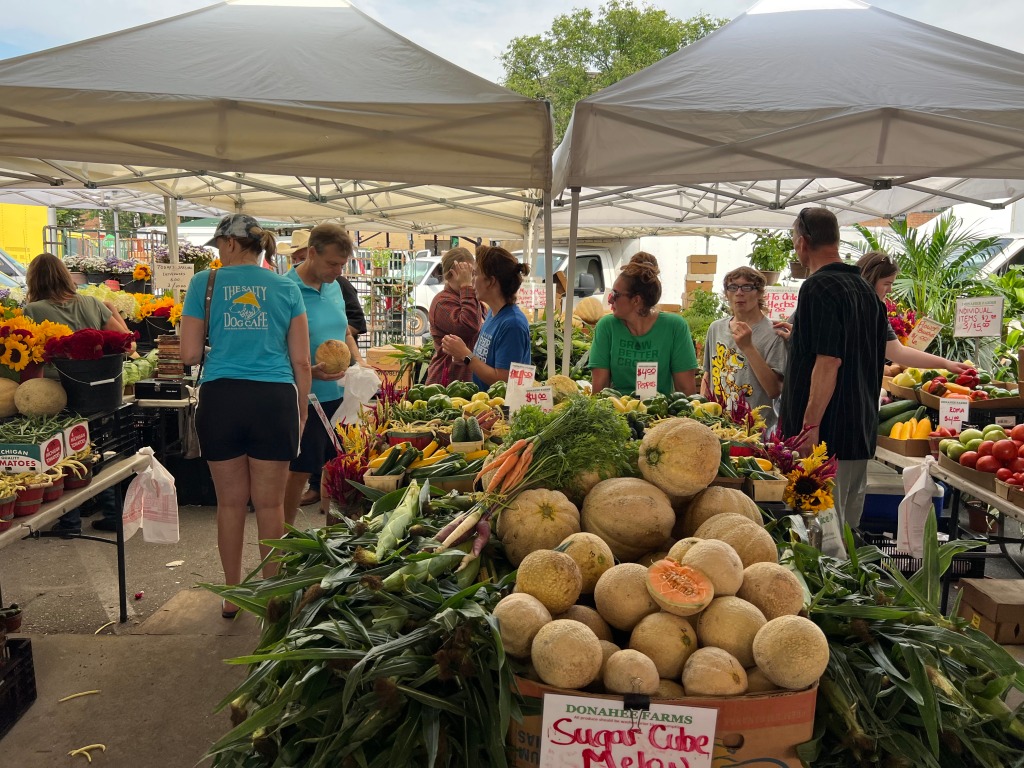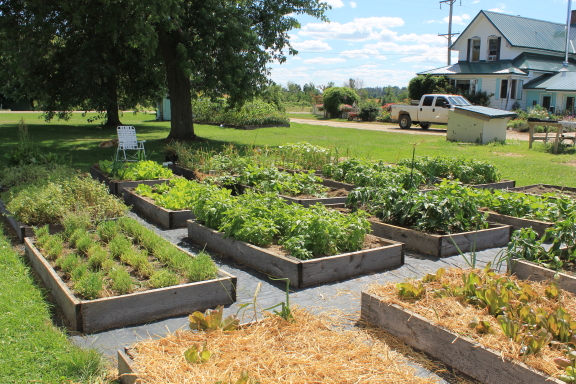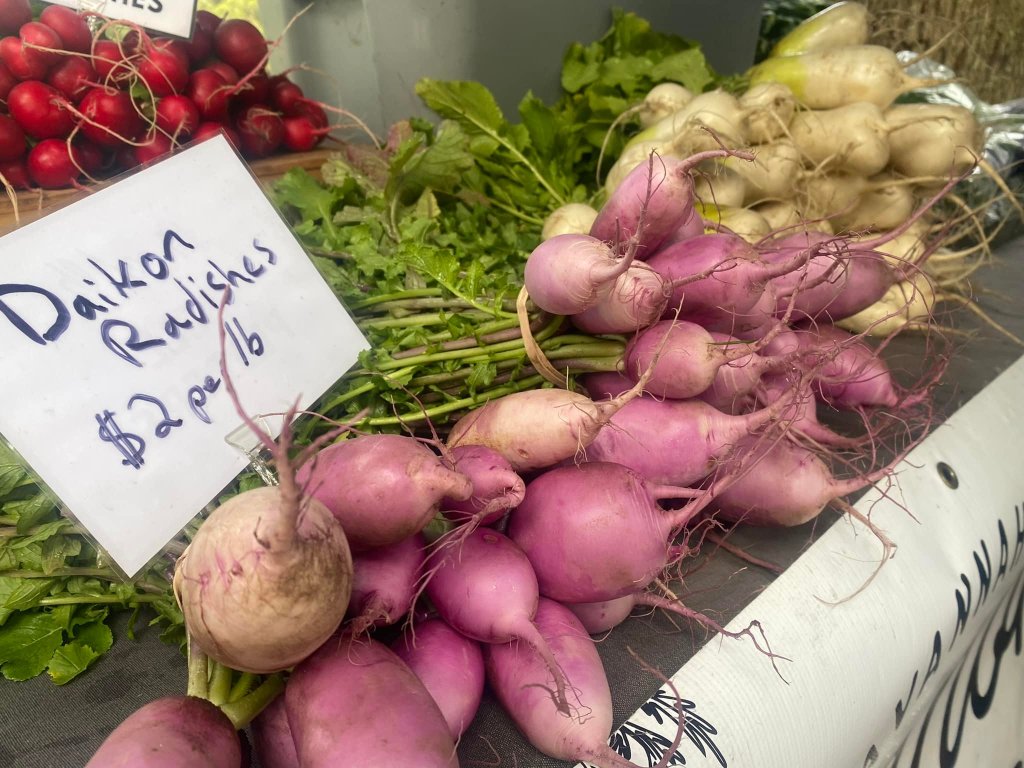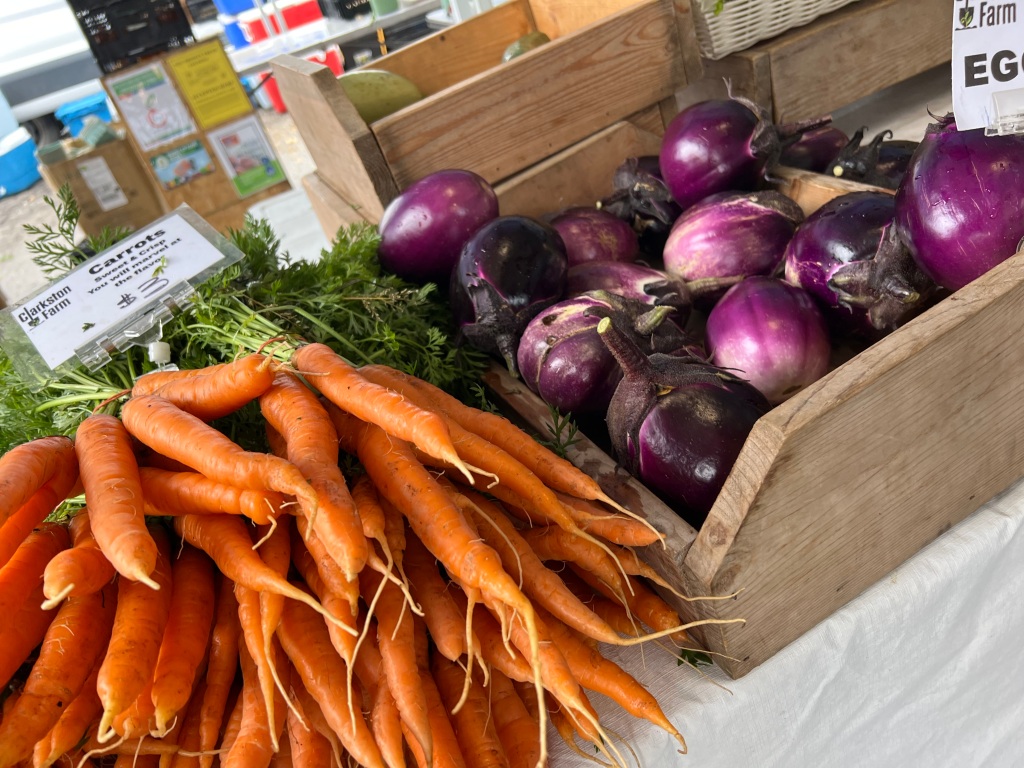“A person who is growing a garden, if he is growing it organically, is improving a piece of the world. He is producing something to eat, which makes him somewhat independent of the grocery business, but he is also enlarging, for himself, the meaning of food and the pleasure of eating.” ― Wendell Berry

You may be asking yourself what it means to eat in season. Eating in season simply means we consume fruits and vegetables naturally ripened and harvested during a particular time of year in your region. Each season brings its own set of crops, & eating according to the season means that you’re consuming produce that is fresh, nutrient-dense, and filled with flavor.
For instance in spring we have an abundance of lettuce & greens, asparagus, rhubarb, and even peas to name just a few. Summer holds its bounty with tomatoes, summer squash, peppers, and fall brings potatoes, onions, and delicious winter squashes. Of course this is a very small list of food available. Depending where you live will determine what is available to you.
When we eat in season, we’re also supporting local agriculture as these crops are grown locally and are more readily available in our community. Eating in season also helps to reduce the carbon footprint associated with transporting food over long distances.
That is where today’s blog post stems from friends. From my heart.
Before I get into it though, I also want to recommend a book that really opened even my eyes to the thought of eating in season. Barbara Kingsolver’s book, “Animal, Vegetable, Miracle”, is a must read. Now let’s get into the meat of this topic.
What Does Eating in Season Mean?

What are the Benefits of Eating in Season?
There are a plethora of benefits associated with eating in season including both health and environmental. In-season produce is typically fresher than out-of-season produce, which means it contains more nutrients and is more flavorful. Produce harvested at its peak ripeness has had more time to develop its full flavor profile, which means it tastes better.
Eating in season also means you’re consuming produce grown locally, which supports small-scale farmers in our community. This means we’re helping to strengthen our local economy, which is beneficial for the environment as it reduces the carbon footprint associated with transporting food over long distances.

Understanding Local Agriculture
Local agriculture is the practice of growing crops and raising animals within a specific region. This means the produce is grown and sold within the community, which helps to support small-scale farmers and local businesses. Local agriculture is becoming increasingly important as we become more conscious of the impact our food choices have on the environment.
When we buy local, we’re not only supporting our local economy, we’re also reducing the carbon footprint associated with transporting food over long distances. Additionally, local agriculture is often conducted using sustainable practices that minimize the use of harmful pesticides and fertilizers, which can be harmful to the environment.

How Does Eating in Season Support Local Agriculture?
Eating in season supports local agriculture in several ways. First, it helps to create demand for locally grown produce, which supports small-scale farmers in our community. When farmers are able to sell their produce locally, they don’t have to rely on long-distance transportation, which is costly and environmentally damaging.
Secondly, eating in season means that we’re consuming produce that is fresher and more flavorful, which creates demand for more locally grown produce. This means that farmers are more likely to continue growing crops locally, which helps to support the local economy and promote sustainable agriculture.

Sustainability and Eating in Season
Eating in season is also beneficial for the environment. When we eat in season, we’re consuming produce grown locally, which means it doesn’t have to be transported over long distances. This reduces the carbon footprint associated with transporting food, which is a major contributor to greenhouse gas emissions.
Local agriculture is often conducted using sustainable practices minimizing the use of harmful pesticides and fertilizers, which can be harmful to our environment.
Eating in season also means that we’re consuming produce naturally ripened and harvested, which means it doesn’t require as many preservatives or additives as out-of-season produce.
Tips for Eating in Season
Eating in season can be a fun and delicious way to support local agriculture and promote sustainability. Here are some tips to help you get started:
- Shop at farmers’ markets. Farmers’ markets are a great place to find locally grown produce that is in season. You’ll also be able to talk to the farmers themselves and learn more about how the food is grown.
- Join a CSA. Community Supported Agriculture (CSA) programs allow you to buy a share of a farmer’s harvest for a season. This means that you’ll receive a weekly box of produce that is in season and locally grown.
- Check out local food co-ops. Food co-ops are community-owned grocery stores that focus on selling locally grown produce and other sustainable products.
- Check the labels. When you’re shopping for produce at the grocery store, look for labels that indicate where the produce was grown. Choose produce that was grown locally whenever possible.
- Learn about seasonal produce. Take the time to research what produce is in season in your area. This will help you plan your meals and make sure that you’re eating in season.

Where to Find Local, Seasonal Produce
If you’re looking for local, seasonal produce, there are several places to look. Farmers’ markets, CSAs, and food co-ops are great places to start. You can also check out local grocery stores and look for labels that indicate where the produce was grown. Finally, you can also consider growing your own produce. Even if you don’t have a lot of space, you can grow herbs or small vegetables in pots on your balcony or windowsill.

If you enjoyed this blog, please LIKE, Follow, Share & leave me a comment! I love your feedback!
If you aren’t following me on Facebook & Instagram go on over & give a LIKE & Follow me for daily tips & tricks for your home & garden!
Until next time remember to,
Eat fresh, shop local & have a happy day,
Jean
Copyright Policy
All text and images on this site are copyright of For Dragonflies And Me. Unless otherwise noted, you may not use this content.






